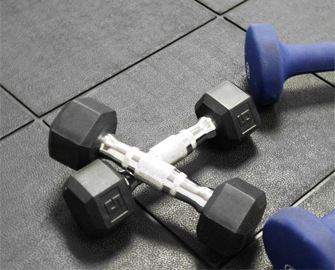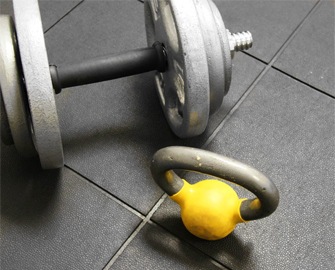
Rubber flooring for basement(s) make aesthetic sense!
Basements are often the forgotten, neglected room out of the entire house, used mainly for storage and for housing the occasional childhood nightmare. Don’t blame the kids—even adults are frightened by dark basements, and with good reason! By laying down rubber basement flooring which comes in a variety of monster-proof colors like red, blue, and green, even the darkest and creepiest basement can get a major facelift and new life! A warm and fuzzy basement flooring option like carpet, wood, laminate, or marble, do not make a whole lot of aesthetic sense in a basement. Rubber floors capture that semi industrial, workshop(ish), wine cellar, or man cave feel much better than the alternatives.
Wet basements have met their match with rubber flooring!
Wet region folks understand how frustrating it is when the rainy season is a little more generous because it usually means some lower-level flooding. Spend less time worrying about wet basements and about water damaging your storage items by installing rubber flooring, which is resistant to moisture! Rubber floor rolls and tiles will act as a basement floor moisture barrier by trapping any water that may have seeped in underneath the tile, thus protecting the products above. Also, because of rubber’s naturally high surface grip, there will be no more slipping and falling on wet floors! Rubber flooring for basement applications is one floor which will not need to be replaced following a flood. You can remove the tiles, take them outside, and have mother-nature help you in the drying process.
 Rubber flooring is mildew resistant and does not harbor bacteria.
Rubber flooring is mildew resistant and does not harbor bacteria.
Every basement comes with some friends—most of them are microscopic, smelly, and ridiculously difficult to eliminate from dark, moist corners. Good news! If you install moisture-resistant rubber tiles, the problem is already mostly eliminated (as long as you keep your basement dry!). Rubber surfaces (unlike wood or carpet floors) are resistant to mildew growth, so it won’t be long until the mildew issue gets packing! Unlike laminate, carpet, and wood, rubber flooring does not act as a food source for bacteria or other organisms. As long as you keep the floor dry following a flood, your worries are over. Rubber flooring is the best basement flooring option!
Rubber flooring provides underfoot cushion and warmth.
Basements that are made of hardwood, linoleum, concrete, or even tile are ridiculously cold, especially during icy winter months! Stop shivering every time you set your toes on your basement floor and consider laying down some rubber tiles. They don’t necessarily exude warmth, but since rubber is a natural insulator it is guaranteed that they will be warmer and more comfortable than any other hard surface.
Rubber flooring is easy to install and remove.
Even if you’re anticipating moving in the near future, don’t rule out rubber as a basement flooring option for now! Rubber flooring, no matter if you choose mats or tiles, is easy to install and even easier to remove. Rubber basement flooring can stay put under its own weight so you don’t even have to worry about permanent, or even temporary, adhesives. No matter where you move to, your rubber floor can move with you almost effortlessly. In basements you do not want permanent flooring anyway due to the fact that a wet basement floor can lead to health hazards if it is not allowed to properly dry. Rubber flooring for basement floors solves this concern. Install it with some two-sided tape and get busy in your new game-room!